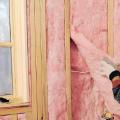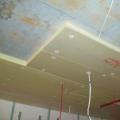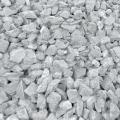Material consumption rate in construction. Construction materials and list of works
The cost of construction depends on many indicators, the main ones being: the quantity and cost of labor, material resources and operating time of equipment. That is, knowing the amount of resources required, for example, for a major renovation of a building, and the current prices for them, we can talk about the cost of the object as a whole and plan logistics.
The rate of material consumption in construction is determined by means of an estimate and normative base, which contains information on labor costs, the average level of work, the composition and operating time of equipment, and also includes information on materials and their consumption in natural units.
Basic Concepts
Reconstruction of existing facilities, major and current repairs, restoration of architectural structures and construction of new buildings - all this is united under one term “construction”. At the same time, material resources (MR) are a set of objects of labor that are used in its process. These include products, materials, semi-finished products, parts and structural elements. But their composition has nothing to do with technological equipment, furniture or inventory.
The average indicator of the need for a specific item of labor required to produce a unit of volume of construction work is defined as the rate of material consumption in construction.
Classification of materials
In modern construction, the range of materials used for it contains more than one hundred items. Depending on their origin, this entire list is divided into 2 types: natural and artificial materials. The first ones are extracted from the bowels of the earth - stone, sand, wood, straw. And the latter are a product of processing natural raw materials: brick, cement, glass, ceramics.

According to their purpose, types of building materials are divided into 2 categories:
- general purpose, used in the construction of structures and buildings of various types. This group includes brick, cement, concrete;
- special purpose, with improved properties. For example, thermal insulation, acoustic, waterproofing materials.
The classification, according to the manufacturing method and technological characteristics, distinguishes 4 groups of materials: natural stone, astringent, forest and metal.
Of course, each construction job involves the use of a specific material with certain properties. Thus, to decorate the facade of buildings it is necessary that it be moisture and frost resistant. Facing bricks are endowed with such properties, therefore, the standard for the outer covering of walls of buildings and structures is the consumption of this type of material resource.
Need for material resources
The consumption of materials for the construction of a facility is established at the initial stage of this entire long process. It all starts with developing a project or drawing up a defective statement (DS), depending on the complexity of the work. In any case, the need for resources is determined in relation to their list and volumes.

The rate of material consumption in construction can be found in two ways: normative, using an estimate base, and design, using drawings. Estimated standards determine consumption unambiguously and without adjustments. They contain a list of work processes that are selected in accordance with the specific construction technology described in the DF/project.
The design method involves calculating the consumption of materials according to specifications, working drawings and production standards. This method is considered more objective, since the planned need is subject to adjustment and, as a result, the consumption of building materials is closer to the actual one.
Estimated standards
Nowadays, not a single construction project can be completed without drawing up design and estimate documentation. It is this that serves as the basis for concluding a contract for construction work. An estimate is drawn up by selecting from a variety of normative collections of standards that correspond to the specific construction technology.
The average set of resources set for the work meter is called the estimated norm. Thanks to it, the standard amount of resources for excavation, piles, finishing, insulation, painting work, etc. is determined.
Nowadays in Russia there are state elemental estimate standards (GESN for short), used for preparing estimates using the resource method, and federal unit rates (FER), which are the basis for creating estimates using the base-index method.

Example of GESN
Thus, the collection 2001-63 presents standards for wallpaper, cladding and glass work, which contain information on the consumption of material resources. The technical part of the regulatory document describes how the scope of work should be determined, for example, when changing glass, the glazing area is used as a meter.
So, if we take standard 63-1-2, then it provides information about the resources required to change glass with an area of up to 0.5 m², up to 3 mm thick, on glazing beads. The scope of work is summarized as follows:
- removal of old glass;
- removing glazing beads;
- cutting and fitting new glass;
- its insertion with the installation of glazing beads;
- wiping glass.

Norm meter - 100 m². This suggests that the resource consumption shown in the table corresponds to the amount of work per 100 m² of glazing.
The main types of building materials, according to the above standard, are glass and glazing beads. Moreover, the glass consumption rate per 100 m² of work is 115 m², which means that losses possible during the cutting process are taken into account.
Production consumption standards
Production cost standards are developed according to methodological guidelines in compliance with technical regulation of material losses, based on the conditions of work production provided for by SNiP. The formula for the production rate of consumption of building materials looks like this:
N=N h +N 0 +N p, where
N h is the amount of material without taking into account losses and waste that occur during movement, storage and placement of it;
N 0 + N p are, respectively, waste and losses, without which not a single production process can do. For example, cuttings of cables, pipes, glass, sawdust, loss of bulk materials.

Individual consumption rates
Individual quotas are developed in cases where these works are not included in the range of estimate and production standards. They are created within a construction and installation organization, and they are used to determine the rate of material consumption in construction for the manufacture of individual (according to the project) metal structures, frames, reinforcing mesh or sawing of timber.
These standards are created in order to be used in drawing up estimates using federal funds, and are subject to examination. They must also be approved by the chief engineer at the enterprise.

Actual consumption
Even if the construction is planned for more than one year, monthly reports on it are still submitted to the accounting department. One of such documents is the foreman’s report on the actual consumption of materials. The basis for writing off materials are:
- building codes that determine consumption;
- consumption rates for a specific production, approved by the head of the enterprise;
- journal KS-6a, which records the execution of work;
- a report containing information about actual consumption.
A report is executed on Form M-29, which contains the table below:
| No. | Material code | Name | Unit measurements | Normal consumption | Actual expense | Savings/overspending |
| 1 | 1001 | Facing brick | pcs. | 150 | 150 | - |
| 2 | 1121 | Primer | l | 27,8 | 30 | +2,2 |
| 3 | 1321 | Construction nails | T | 0,0002 | 0,00019 | -0,00001 |
To this report, the site manager will have to attach an explanatory note to the technical department about the excess primer consumption. It will have to indicate the reasons for this state of affairs.
Construction materials and list of works
The standards, as you understand, are average in nature and do not always take into account modern production technology, which involves the use of new materials. Below is a table with reference information on the consumption of materials when performing popular general construction work.
| No. | Name | Consumption | Note |
| Painting works: | |||
| 1 | Water-based paint | 9-15 l/m2 | 2 layers |
| 2 | Single-layer water-based | 8 l/m 2 | |
| 3 | Acrylic paint | 10-14 l/m2 | 2 layers |
| Finishing work: | |||
| 4 | Primer "Betokontakt" | 0.35 kg/m2 | Layer thickness 1 cm |
| 5 | Gypsum mixture "Rotband" | 8.5 kg/m2 | Layer thickness 1 cm |
| 6 | Tile adhesive SM 9 | 3.2 kg/m2 | Tile side up to 200 mm |
| Floors: | |||
| 7 | Cement screed " Knauf-Ubo" | 7.5 kg/m2 | 1 cm |
| 8 | Cement-based sand concrete M-300 | 20 kg/m2 | 1 cm |
| 9 | Fast-hardening universal self-leveling floor " Eunice Horizon" | 17 kg/m2 | 1 cm |
Its use will help to understand, albeit approximate, the cost of carrying out certain works, and of construction in general.
 Construction materials and list of works
Construction materials and list of works Proper insulation of a wooden ceiling in a private house
Proper insulation of a wooden ceiling in a private house What types of crushed stone are there?
What types of crushed stone are there?